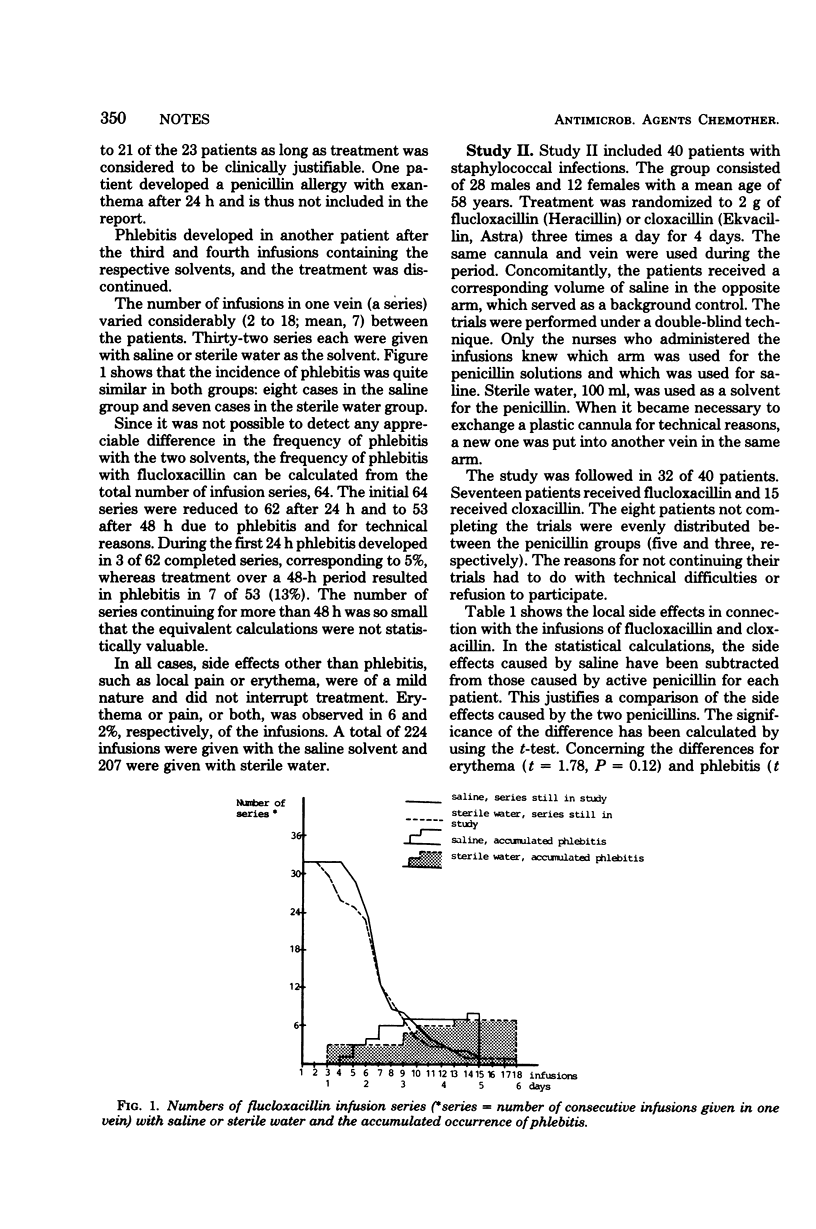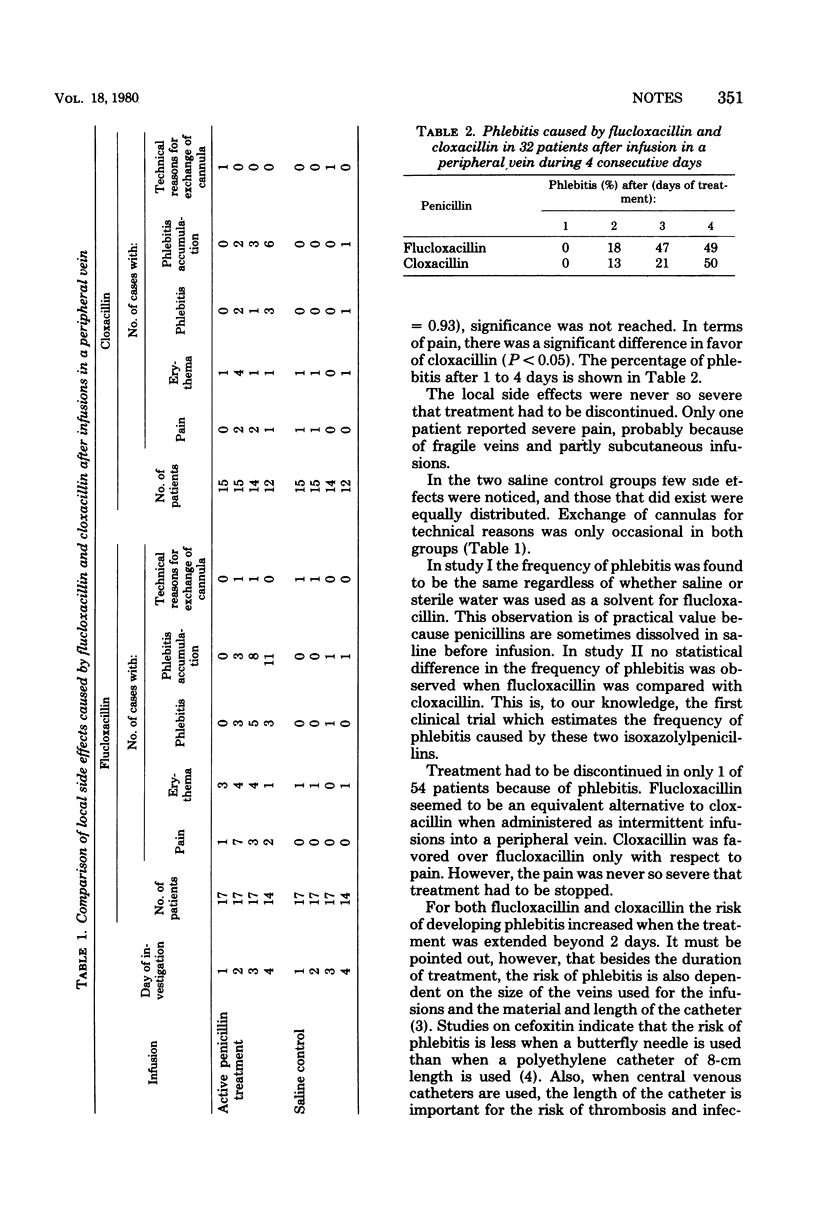Abstract
Two studies were performed on a total of 54 patients with staphylococcal infections. Study I compares with phlebitogenic properties of flucloxacillin after intravenous infusions when either saline or sterile water was used as a solvent. No difference was observed between the two solvents, and the frequency of phlebitis for the total material without respect to solvents was 5% after 1 day of treatment and 13% after 2 days. Study II was a double-blind comparison of phlebitis caused by intravenous infusions of either flucloxacillin or cloxacillin. The frequencies of phlebitis were found to be 18 and 13%, respectively. After 2 days of treatment the frequency of phlebitis increased dramatically for both drugs. All infusions were given through a plastic cannula of 5-cm length and 1.2-mm diameter.
Full text
PDF



Selected References
These references are in PubMed. This may not be the complete list of references from this article.
- Ehringer H., Fischer M., Holzner J. H., Imhof H., Kubiena K., Lechner K., Pichler H., Schnack H., Seidl K., Staudacher M. Gangrän nach versehentlicher intraarterieller Injektion von Dicloxacillin. Dtsch Med Wochenschr. 1971 Jun 25;96(26):1127–1130. doi: 10.1055/s-0028-1108396. [DOI] [PubMed] [Google Scholar]
- Gottlob R. Endothelschädigungen durch intravasale Injektion von Arzneimittelen. Arzneimittelforschung. 1972 Nov;22(11):1970–1975. [PubMed] [Google Scholar]
- Maki D. G. Preventing infection in intravenous therapy. Anesth Analg. 1977 Jan-Feb;56(1):141–153. doi: 10.1213/00000539-197701000-00036. [DOI] [PubMed] [Google Scholar]
- Sinapius D., Bründel K. H. Endothelschädigung durch die halbsynthetischen Penicilline Cloxacillin, Dicloxacillin und Flucloxacillin. Vasa. 1975;4(1):54–58. [PubMed] [Google Scholar]


